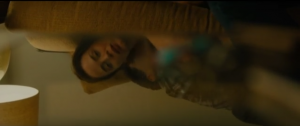I found the sound recording exercise interesting, not only because of the ‘candid’ capabilities of the uni-directional microphones, but also because it is rare for me to solely concentrate on audio, rather than vision.
We started off in class learning about the sound recording technology (a Zoom H4n), which I had used before to record the audio for some footage I shot last year on a DSLR camera; even so, it was a good refresher course. I then headed out with Annick to record some atmos and foley sounds, taking turns in directing the microphone and controlling the H4n. We started off seeing how far we could push the technology by hiding around the corner of the tech desk in building 9 and recording the conversations of people talking to the tech guys. I found myself making comparisons between a microphone and a camera: with a camera you can ‘enhance’ what the natural eye can see. By using either a telephoto lens or zooming in on your subject you can ‘see’ a lot further than what you would be able to without the apparatus. Similarly, with the uni directional microphone we could hear things a lot clearer and from far further away than what we would be able to with our ears.
It was also a good exercise to simply stand and listen to our surroundings, trying to pick out particular things we wanted to record. (Usually when I am filming something at university I am more so looking for aesthetically pleasing things to film, rather than listening out for intriguing sounds in the environment). However, I think next time this exercise would be better suited to individual work. Now that we are all comfortable with the recording technology I believe it would be advantageous to set out by ourselves to really concentrate on the noises of the city without the distraction of talking to someone else about what we should record. I find that completely blocking out my vision and zoning in on the sounds surrounding me is an incredibly meditative process because it is an exercise in focusing all of your attention on only one of your senses. After listening back to my sound recordings, I feel like they would have benefitted from a little more thought and attention to detail, which could have possibly been achieved through more efficient use of time and by being able to ‘fly solo’.


